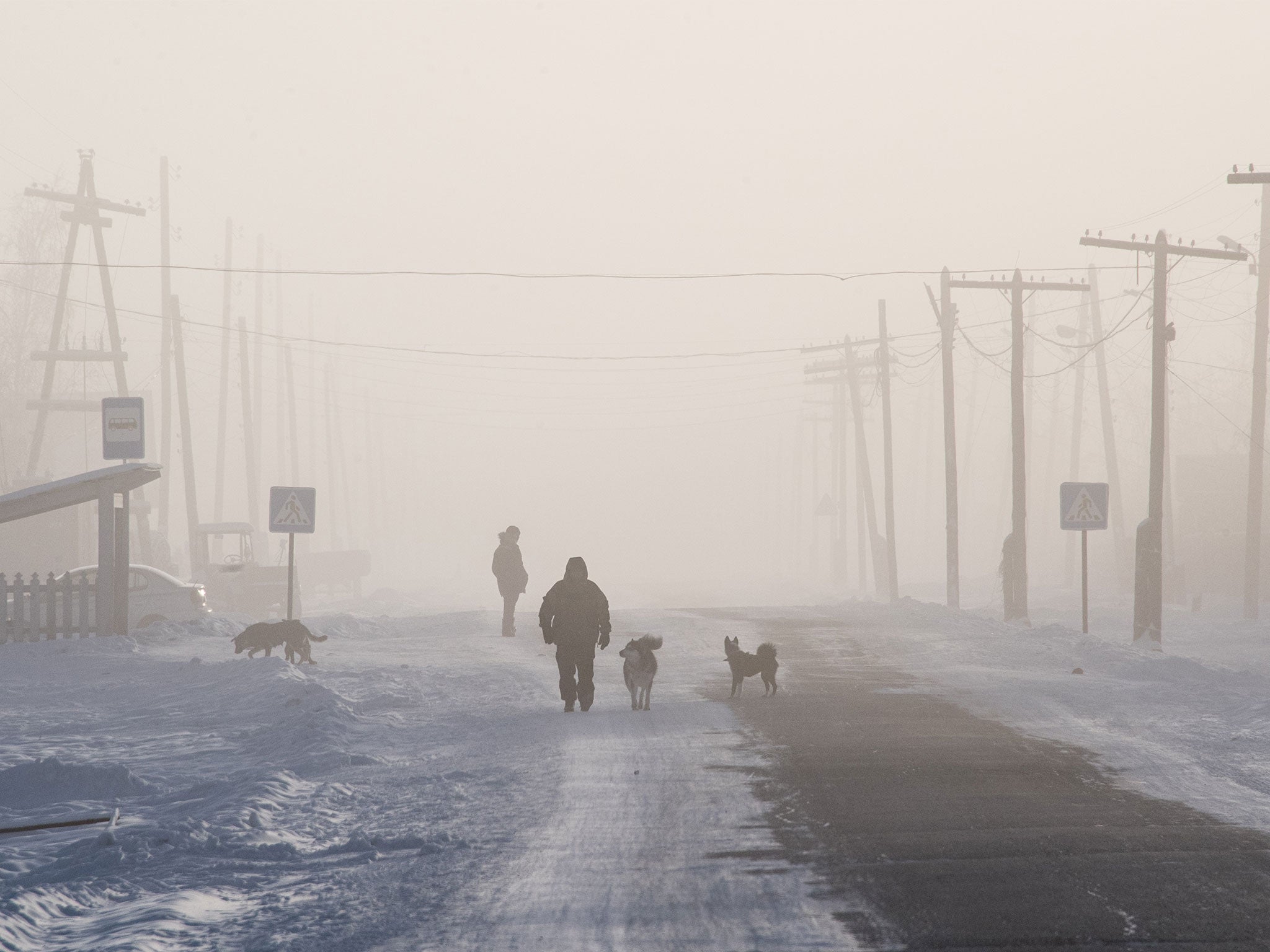Climate change could make frozen Siberia habitable within decades, scientists reveal
Temperatures could rise by as much as 9.1C while mass-melting would see size of permafrost drop by quarter

Your support helps us to tell the story
From reproductive rights to climate change to Big Tech, The Independent is on the ground when the story is developing. Whether it's investigating the financials of Elon Musk's pro-Trump PAC or producing our latest documentary, 'The A Word', which shines a light on the American women fighting for reproductive rights, we know how important it is to parse out the facts from the messaging.
At such a critical moment in US history, we need reporters on the ground. Your donation allows us to keep sending journalists to speak to both sides of the story.
The Independent is trusted by Americans across the entire political spectrum. And unlike many other quality news outlets, we choose not to lock Americans out of our reporting and analysis with paywalls. We believe quality journalism should be available to everyone, paid for by those who can afford it.
Your support makes all the difference.Climate change could make large swathes of Siberia habitable before the end of this century, a new study suggests.
Winter temperatures could rise by as much as 9.1C while mass-melting would see the size of the permafrost drop by a quarter under the most extreme scenario considered feasible by scientists.
This would open up pristine areas of Russia east of the Ural Mountains, paving the way for millions of people to relocate to the region, which stretches from northern Kazakhstan to the Bering Sea.
Modelling for a less extreme rise in atmospheric carbon still resulted in temperature increases of up 3.4C in the winter months.
Under this projection, scientists estimated there would be a five-fold increase in the capacity of the territory to sustain human populations.
Researchers said the speed with which humans could move to Siberia would depend on investments in infrastructure, as the region was currently poorly served.
For their analysis, the team from Russia’s Krasnoyarsk Federal Research Centre and the US National Institute of Aerospace looked at two possible scenarios for how concentrations of CO2 may rise in the coming decades. One, termed representative concentration pathway (RCP) 2.6, represented “mild” climate change, while RCP 8.5 represented more extreme changes.
The two trajectories are accepted by the Intergovernmental Panel on Climate Change as being at the lower and upper ranges for greenhouse gas emissions: RCP 2.6 assumes global emissions will peak by 2020, with emissions declining substantially thereafter; whereas under the RCP 8.5 scenario, emissions will continue to rise throughout the 21st century.
Dr Elena Parfenova, lead author of the study, which was published in Environmental Research Letters, said: “We found increases in temperature of 3.4C (RCP 2.6) to 9.1C (RCP 8.5) in mid-winter; increases of 1.9C (RCP 2.6) to 5.7C (RCP 8.5) in mid-summer; and increases in precipitation of 60mm (RCP 2.6) to 140 mm (RCP 8.5).”
Under the group’s worst case simulations, permafrost coverage in Russia’s far east would decrease from the current level of 65 per cent to 40 per cent by the 2080s.
At 13 million square kilometres, Russia’s Asian territory accounts for about 77 per cent of the country’s total land area, but around just 27 per cent of its population, much of which is concentrated along the forest-steppe in the south.
But Dr Parfenova said this was likely to change: “Asian Russia is currently extremely cold. In a future warmer climate, food security in terms of crop distribution and production capability is likely to become more favourable for people to support settlements.”
She added: “However, suitable land development depends on the authorities’ social, political and economic policies.
“Vast tracts of Siberia and the far east have poorly developed infrastructure. The speed these developments happen depends on investments in infrastructure and agriculture, which in turn depends on the decisions that should be made soon.”
Vladimir Chuprov, of Greenpeace Russia, said there were a number of factors triggered by a warming Siberia that would complicate efforts to increase the human population there.
“Permafrost degrading would mean that at any area with dominating swamps or wetlands, it will be impossible to build infrastructure” in the short term, he told The Independent. He added that “higher temperatures will provoke more insects, which is bad for agriculture”.
Join our commenting forum
Join thought-provoking conversations, follow other Independent readers and see their replies
Comments